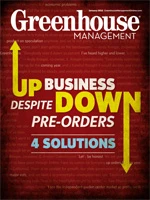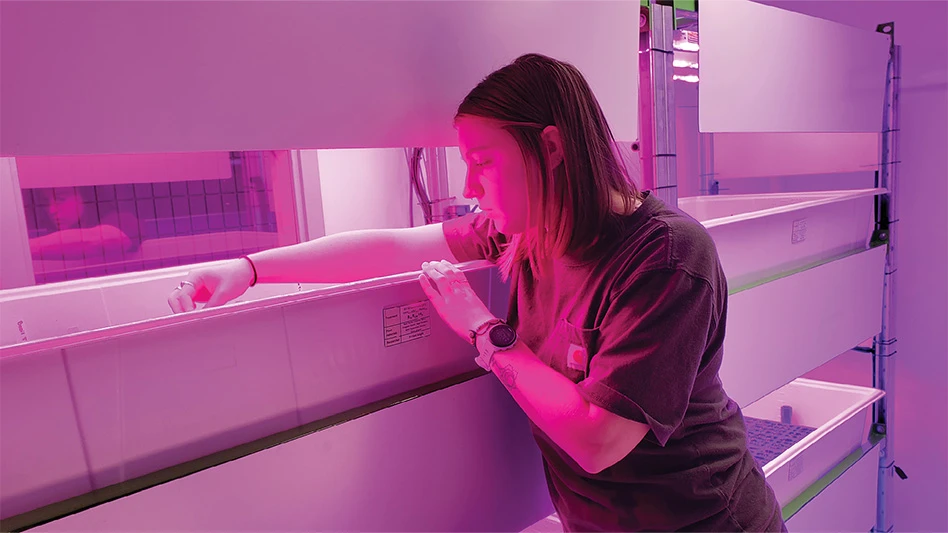 Everywhere you look, you'll find technology that will help you do just about any job quicker and easier. But sometimes the good ol' human hand can actually be more efficient than automating a process.
Everywhere you look, you'll find technology that will help you do just about any job quicker and easier. But sometimes the good ol' human hand can actually be more efficient than automating a process.
In those cases, it's hard to really know if you should invest in the technology. Such is the case when it comes to making decisions about investing in trimming automation systems.
Greenhouse Management spoke with Paul Whiting, national sales manager for Bouldin & Lawson LLC, about how to decide if automated trimming systems are best for your business.
What should growers look at to determine if automated trimming systems are best for them?
There's a lot of factors that come into play. One is simply labor. If one wants to trim product, and it's too slow by hand or it's too inconsistent by hand, automation reduces labor and also gives you consistency of the trim products, so every tray, pot, whatever, they all come out exactly the same.
Another factor is … if you're doing rooted cuttings, or whatever it is, and your products get to a certain size, and you want to pinch them out so they'll bud out, an automated trimmer is a very clean, effective way to do it. It's more consistent, more accurate, and it can be sterilized, so you don't have contamination issues. It's not so much a labor issue, although that probably comes into a small part, but the driver can be, 'I have to get these young cuttings pinched, and an automated machine is actually a clean, effective way to get it done.'
Consistency or practicality would be a key to that - it's just not practical to have someone trim them by hand where a machine can really get this done.
You have to look at all the factors that are an issue for them and see if a piece of machinery fits to solve the problem. For the young plant producer, it's almost a no-brainer to do that.
There can be different driving forces behind those decisions depending if it's just a general grower who wants to reuse some of his existing product that's coming through - he just wants to trim it down and get it to bud out, shoot out before he sells it - as opposed to a young plant producer who's trying to get a better quality product.
What are some of the benefits of automating?
Obviously it's less labor and more consistent, but really the driver is, even if it's no more cost difference of doing it by hand or machine, if it's not practical to do it by hand, the machine wins over because you can have one person set it up, and it can just run, it can be sterilized, it's consistent, it's uniform and there's no lunch breaks.
If you're trimming it through a machine, you're not getting any debris falling back on the trays — it's not laying on benches or in greenhouses. That's another important issue when you're doing trimming — you don't want that dead material rotting and causing disease either in a tray or in a greenhouse. Most of these machines have a vacuum system, so it vacuums it off and keeps trays clean and you don't have any contamination in the greenhouse afterwards.
 When does it become not practical to invest in automation equipment?
When does it become not practical to invest in automation equipment?
For some people, the way they're set up, a machine is not practical because the way they have to pull the material off benches or feed it through the greenhouse, it actually becomes a real struggle to trim this stuff. For other guys who are already thinking that way, when they route their product through greenhouse or some other area, they can actually route it through the machine that trims it on its way to another place or position or whatever job's going on. If you have already got stuff on the benches or on the floor, and now everybody has to lift all those up, and they have to feed them through the machine and then put them back down, even though they want to have that done, the cost to move all that and the practicalities involved, they can say, 'You know what, it's not worth it — my gains are so small, I'm not getting any gain overall.' That's where practicalities can come into play. A lot of the bigger producers, obviously they're set up in a way where they want to do that, and there are benching or conveyor systems. It's set up so they can make that happen.
For a lot of people it's a no-brainer, but a lot of them struggle with, 'Can I actually do this — yes, it would be great because I get a better product or a neater product, and I get all the benefits, but I just can't get in there and get it done,' so it gets put to one side because their infrastructure doesn't allow them to utilize that benefit.
In some of the other young plant producers, it's not quite so easy. It's still a no brainer but because of the different growing cycles of the different product and the concerns over contamination, sometimes other practical issues override being able to do it that way, so it's not an easy sell. Everybody would love to do it, and from cost of the equipment, they look at it and say, 'Yeah, it's a no brainer, but practical issues come into play, and I can't make it work. This is something for the future when we restructure the way the greenhouse flows or the material runs through the benches or whatever it is.' Then they can make it happen.
There's some key reasons but for some people, even though all those key reasons and benefits make great sense, practically, it may not be set up so they can make it work for them. Sometimes additional conveyors and timing can make all that work. It depends what they want to do.
If automation is right for them, what should they look for in choosing a piece of equipment?
Mobility — make sure the equipment is mobile, so they can get it from one house or one location to the next if that's important to them. Some people centralize that kind of stuff, some people want to move that around -- it depends on how their greenhouse is structured and laid out.
If one is a greenhouse that has finished product that's overgrown that he wants to trim, OK, there's a cost saving to that — instead of throwing his product out because it's overgrown, I can cut it back and let it shoot out again, and I can ship it. There's that saving, so that centralized operation is typically what they'll [need] for that.
Then there's the young plant producer who doesn't have overgrown product, but he wants to trim or pinch out to get his quality — what's important to him is being able to sterilize the equipment between production runs so you don't get any contamination from one plant to another or even from plants in the same house. That's something that's important for a young plant producer.
Photos courtesy of Bouldin & Lawson

Explore the January 2012 Issue
Check out more from this issue and find your next story to read.
Latest from Greenhouse Management
- USDA fires experts on invasive pests, including Asian citrus psyllid, chilli thrips
- CEA Alliance celebrates bipartisan introduction of Supporting Innovation in Agriculture Act
- Dümmen Orange North America celebrating 25th anniversary in 2025
- CEA HERB Part 1: Best management practices for culinary herbs
- Lawsuit challenges new H-2 visa rules
- CEA HERB Part 2: A guide to increasing the sowing density of culinary herbs
- Illinois Landscape Contractors Association changes name to Landscape Illinois
- 2025 Proven Winners Horticulture Scholarship applications now open







